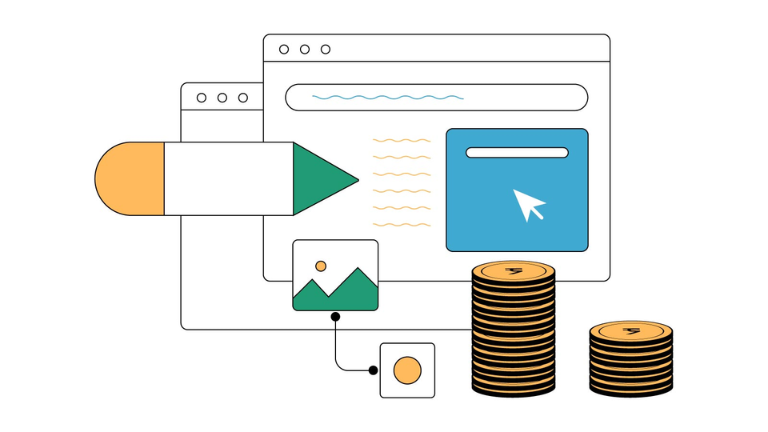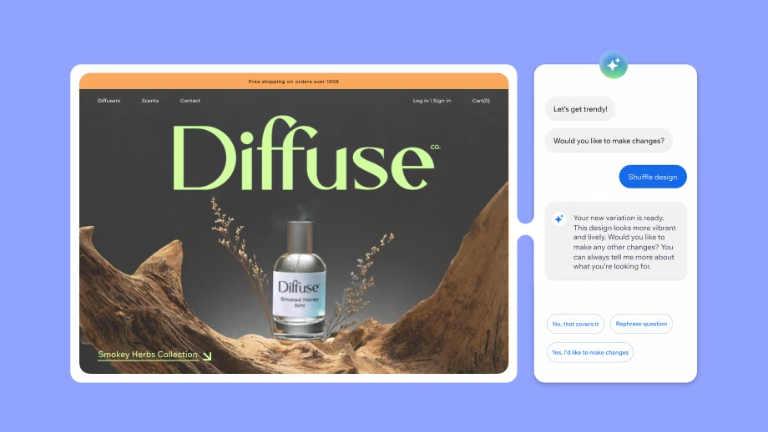Cost-Saving Web Design: Reducing Support Costs with Smart UX Strategies
How UX Optimization Reduces Support Costs
Every customer support request costs time and money. A Cost-Saving Web Design ensures that users can navigate seamlessly, find answers independently, and complete tasks without frustration, reducing the need for customer service intervention.
Why Cost-Saving Web Design Matters:
✔ Reduces customer support tickets
✔ Enhances user experience and engagement
✔ Improves website efficiency and conversion rates
✔ Cuts operational costs for businesses
By incorporating Cost-Saving Web Design principles, businesses can increase customer satisfaction while minimizing the workload on support teams.
1. Smart Navigation & Information Architecture
A well-structured website serves as a map for users, helping them find what they need without confusion or frustration.
Key Features of Cost-Saving Web Design for Navigation:
📌 Clear Menu Labels: Match user expectations and simplify exploration.
📌 Breadcrumb Navigation: Helps users track their location and backtrack easily.
📌 Intelligent Search Functionality: Offers autocomplete suggestions and relevant results.
🔍 Impact on Support Costs:
🚀 Users can self-navigate, reducing “I can’t find this” support requests.
🚀 Fewer calls about confusing menu layouts or missing information.
By making navigation intuitive, a Cost-Saving Web Design minimizes user frustration and reliance on customer service.
2. Self-Service Solutions for User Independence
Modern Cost-Saving Web Design provides users with instant access to problem-solving tools, reducing the need for customer support.
Effective Self-Service Features:
✔ Interactive Product Guides: Walk users through common tasks step by step.
✔ Knowledge Base & FAQs: A searchable library that provides quick solutions.
✔ Video Tutorials: Explain complex processes visually, reducing confusion.
✔ User Dashboard: Allows customers to track orders, update details, and manage accounts independently.
🔍 Impact on Support Costs:
🚀 Fewer calls related to basic troubleshooting and account management.
🚀 Customers feel empowered, leading to increased satisfaction and loyalty.
By providing on-demand support resources, a Cost-Saving Web Design shifts problem-solving power to the user.
3. Form & Checkout Optimization to Prevent Abandoned Transactions
A poorly designed checkout process creates frustration and increases support requests. A Cost-Saving Web Design optimizes forms for clarity, speed, and ease of use.
Key Form Enhancements That Reduce Support Tickets:
✔ Real-time Field Validation: Instant feedback on errors and missing data.
✔ Auto-Save Feature: Prevents frustration from lost progress.
✔ Clear Progress Indicators: Shows users how many steps remain.
✔ Pre-Filled Fields & Address Verification: Prevents input mistakes.
✔ Card Type Detection: Reduces payment errors by recognizing the card type automatically.
🔍 Impact on Support Costs:
🚀 Eliminates user errors that lead to abandoned checkouts and support calls.
🚀 Reduces inquiries about failed payments, incorrect addresses, and form-related issues.
Optimized forms make transactions smoother, faster, and hassle-free, reinforcing a Cost-Saving Web Design strategy.
4. Mobile Optimization for Seamless User Experience
With over 60% of web traffic coming from mobile devices, a Cost-Saving Web Design ensures fast, easy, and frustration-free browsing on smartphones.
Essential Mobile-Friendly Features:
✔ Large, easy-to-tap buttons to prevent misclicks.
✔ Simplified menus for effortless navigation.
✔ Fast-loading pages (under 3 seconds) to prevent drop-offs.
✔ Quick access to help features with a persistent “Support” button.
Key Mobile UX Enhancements & Their Support Impact:
| Feature | Support Cost Impact |
| Order Tracking System | Eliminates “Where is my order?” calls. |
| Field Hints & Auto-Fill | Prevents form rejections and input errors. |
| Price Calculation Display | Reduces confusion about final costs. |
| Offline Mode Warning | Prevents failed submission issues. |
| One-Tap Reorder | Reduces order recreation requests. |
| Recent Purchase History | Minimizes past order inquiries. |
🔍 Impact on Support Costs:
🚀 Fewer mobile-related errors leading to customer service calls.
🚀 Increased mobile conversions due to improved usability.
A Cost-Saving Web Design prioritizes mobile-first experiences, ensuring seamless, frustration-free interactions.
5. Proactive Support Features That Prevent Issues
A Cost-Saving Web Design incorporates proactive assistance tools, guiding users before they encounter problems.
Best Proactive Support Strategies:
✔ Help Tooltips: Appear next to complex fields to clarify user actions.
✔ AI-Powered Chatbots: Answer common questions in real-time.
✔ Order Status Notifications: Reduce “Where is my order?” inquiries.
✔ Personalized Product Suggestions: Minimize “Is this compatible?” calls.
🔍 Impact on Support Costs:
🚀 Fewer support tickets about basic website functions.
🚀 Reduced reliance on live customer service agents.
By offering assistance at the right moment, a Cost-Saving Web Design prevents avoidable customer frustrations.
6. Measuring the ROI of Cost-Saving Web Design
To ensure that Cost-Saving Web Design strategies are effective, businesses must track key performance indicators (KPIs).
Metrics to Measure Success:
📉 Reduction in Customer Support Tickets – Indicates that users can self-solve issues.
📉 Faster Resolution Time – Shorter interactions mean fewer resources spent on support.
📈 Higher Customer Satisfaction Scores – Shows improved user experience and engagement.
📈 Increased Conversion Rates – Indicates that users complete transactions more smoothly.
🔍 Impact on Cost-Saving:
🚀 Businesses save on customer service operational costs.
🚀 Support teams can focus on complex issues rather than repetitive problems.
When executed properly, a Cost-Saving Web Design leads to long-term financial savings and happier customers.
Investing in Cost-Saving Web Design for Business Growth
A Cost-Saving Web Design isn’t just about aesthetics—it’s about functionality, efficiency, and financial impact. By reducing customer frustrations, optimizing self-service solutions, and improving mobile usability, businesses can cut support costs significantly.
🚀 Key Takeaways:
✔ Smart navigation and self-service tools reduce support requests.
✔ Optimized forms prevent checkout errors and abandoned transactions.
✔ Mobile-friendly designs eliminate frustration and misclicks.
✔ Proactive support features prevent common customer issues.
✔ Tracking website performance helps measure cost-saving ROI.
By focusing on Cost-Saving Web Design, businesses can increase efficiency, enhance user experience, and drive long-term success.
💬 What are your thoughts on using web design to cut support costs? Have you encountered a website that made your experience easier?





